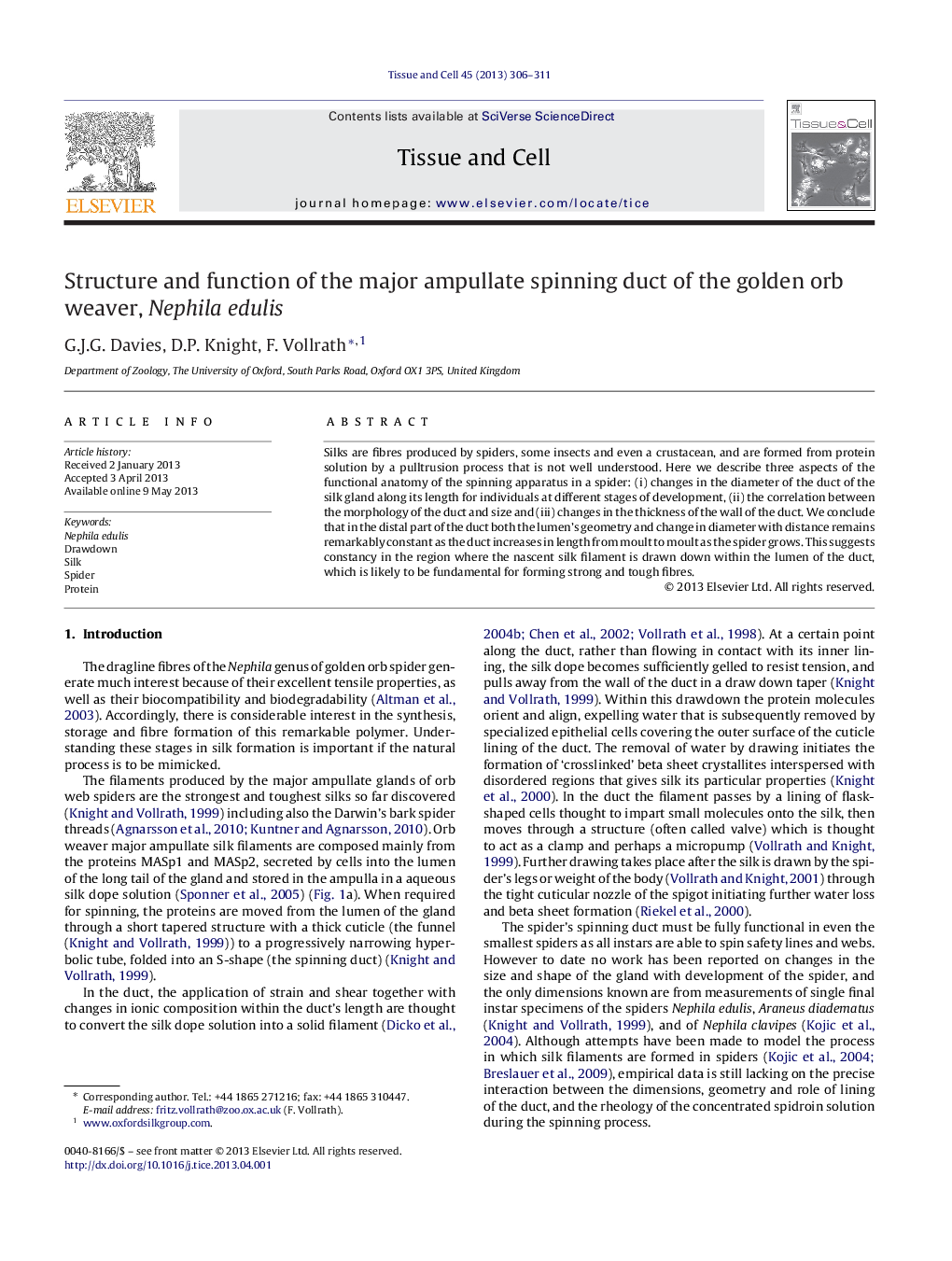| Article ID | Journal | Published Year | Pages | File Type |
|---|---|---|---|---|
| 2203788 | Tissue and Cell | 2013 | 6 Pages |
Silks are fibres produced by spiders, some insects and even a crustacean, and are formed from protein solution by a pulltrusion process that is not well understood. Here we describe three aspects of the functional anatomy of the spinning apparatus in a spider: (i) changes in the diameter of the duct of the silk gland along its length for individuals at different stages of development, (ii) the correlation between the morphology of the duct and size and (iii) changes in the thickness of the wall of the duct. We conclude that in the distal part of the duct both the lumen's geometry and change in diameter with distance remains remarkably constant as the duct increases in length from moult to moult as the spider grows. This suggests constancy in the region where the nascent silk filament is drawn down within the lumen of the duct, which is likely to be fundamental for forming strong and tough fibres.
